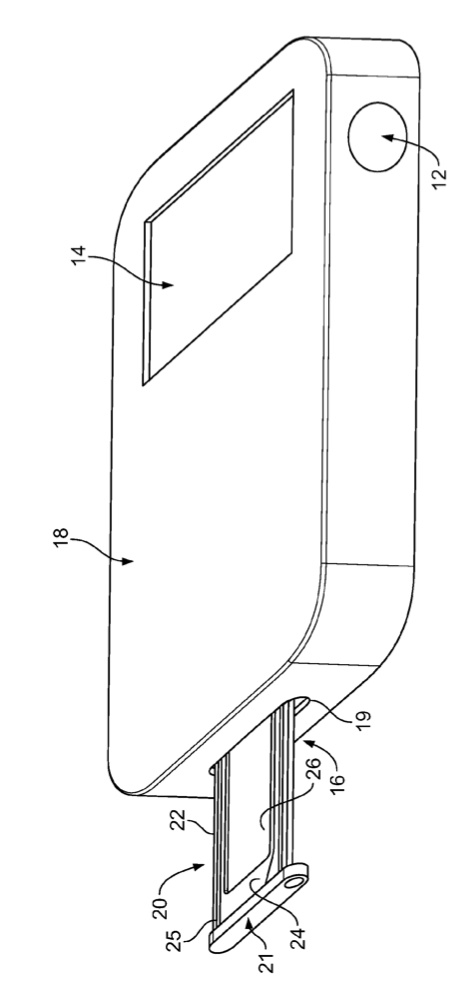Future iOS devices could have compact, ejectable components, per a patent (20090267577) at the US Patent & Trademark Office.
Per the patent, The ejectable component assembly may include a tray that can be loaded with one or more removable modules, wafers coupled to circuit boards, cages and retaining plates to assist in retaining the tray within the assembly. The ejectable component assembly may include springs operative to engage detents in the tray to retain the tray in the assembly. The ejectable component assembly may include a tray ejector mechanism for ejecting the tray from the assembly. The inventors are Scott Myers, Erik Wang and Jason Sloey.
Here’s Apple’s background and summary of the invention: “To enhance the use of electronic devices (e.g., cellular telephones), ejectable component assemblies may be used to couple removable modules to the device. Some known ejectable component assemblies for personal electronic devices include a tray for receiving a removable module, and a connector coupled to a circuit board within the housing of the device for receiving the tray as it is inserted through an opening in the housing. The connector may retain the tray such that the module is functionally connected to the circuit board.
“Variations in the manufacture of such electronic devices result in, for example, variations in the distance between the circuit board and the opening in the housing through which the tray of an ejectable component assembly is to be inserted. These manufacturing variations generally create an undesirable abruptness in the profile created by the tray and the external surface of the housing about its opening once the tray has been inserted.
“Moreover, some known ejectable component assemblies for personal electronic devices also include an ejector coupled to the circuit board of the device for ejecting the tray from the connector and the housing of the device. The manufacturing variations of the device also tend to create variations in the distance between a user external to the device and the ejector, which in turn may increase the size of the electronic device.
“According to some embodiments of the invention, an ejectable component assembly for use in an electronic device that includes a circuit board, a tray, and a cage may be provided. The tray may receive a removable module and be retained between the circuit board and the cage. The tray may include an opening through which the circuit board may establish an electrical connection with the module.
“In some embodiments, the ejectable component assembly may include a wafer that is electrically coupled to the circuit board extends into the opening in the tray to contact the module. In some embodiments, the ejectable component assembly may include a retaining plate with an extension that complements a protrusion in the tray. The extension may guide the tray when it is inserted into or ejected from the assembly. The extension may also assist in retaining the tray when fully inserted in the assembly.
“In some embodiments, an electronic device having a housing, a circuit board, and a tray for receiving a module may be provided. The tray may include at least one detent. The electronic device may also include at least two springs that are operable to engage the at least one detent of the tray to retain the tray within the assembly.
“In some embodiments, the assembly may further include a compression spring that may be positioned behind one end of the tray within the assembly. The compression spring may compress when the tray is inserted into the assembly and decompress when the springs disengage from the detent to assist in ejecting the tray from the assembly.
“In some embodiments, an electronic device having a housing, a tray for receiving a module, a cage for receiving the tray, and a retaining plate may be provided. The retaining plate may include at least one protrusion to engage a portion of the tray. In some embodiments, the retaining plate can include a ramp positioned such that an end of the tray rests on the ramp when the tray is within the assembly. The ramp may ensure that the module placed in the tray makes contact with the cage and prevent the module from slipping out of the tray during removal of the tray from the assembly. In some embodiments, the assembly may include an ejection mechanism operable to remove the tray from the assembly.
“The ejection mechanism may include an ejection arm and an actuating arm that may pivot about a pivot point when a suitable instrument applies force to a user contact plate. By pivoting, a tray contact plate may apply a force to a portion of the tray toward the exterior of the assembly to eject the tray from the assembly.”
— Dennis Sellers



